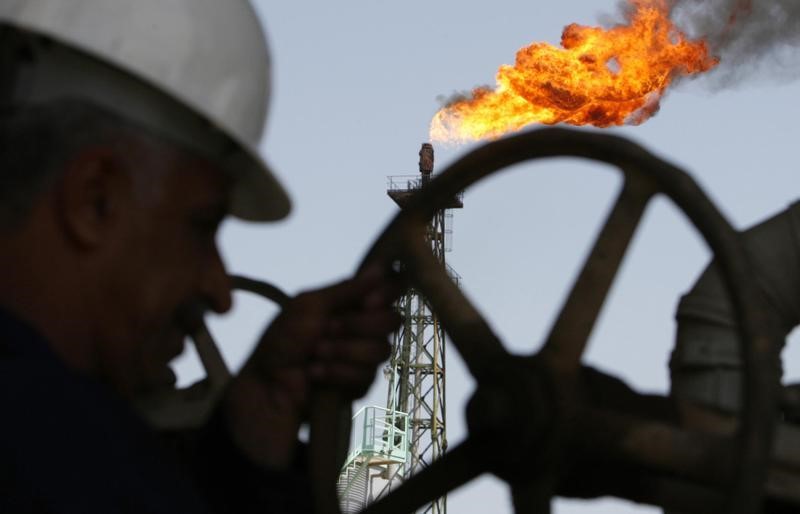Investing.com’s stocks of the week
By Barani Krishnan
Investing.com - Surprises, surprises, surprises.
First, it was President Donald Trump refusing to allow any more sanction waivers on Iranian oil. Then it was the president's dubious claim that he had "called" OPEC to lower U.S. gasoline prices. Now, it's Russian leader Vladimir Putin gently reminding the Saudis not to renege on their joint production cut deal.
Crude prices, which tumbled their most in two months on Friday after Trump's intimation that OPEC was on his side for lower gas prices, rose just slightly in Monday's session after conflicting signals from the market's three key players -- the United States, Saudi Arabia and Russia.
New York-traded West Texas Intermediate, the benchmark for U.S. crude, settled up 20 cents, or 0.3%, at $63.50 per barrel. It slumped 3% on Friday for its biggest selloff in a day since Feb. 25. Just a week ago, WTI hit highs above $65 for the first time in nearly six months.
London-traded Brent, the benchmark for global crude, slid by 18 cents, or 0.3%, to $71.45 by 2:35 PM ET (18:35 GMT). Brent fell 3% on Friday after racing above $75 earlier in the week, the first time since October.
The national average price of regular unleaded gasoline was $2.886 on Monday, according to the American Automobile Association, unchanged from Saturday and Sunday and up 27.4% this year. Statewide prices range from $2.511 in Alabama to $4.08 in California, a function mostly of gas taxes, AAA's Daily Fuel Gauge Report said.
Traders said oil bulls have been stopped in their tracks by fear that Trump might resort to more of the unexpected to shoot down the crude rally.
After all, it was Trump who helped push WTI and Brent past their $65 and $75 resistance with his renewed pledge to wipe Iranian oil off the market. Given his penchant for volatile decision-making, he could also reverse that position anytime to achieve the opposite. No one has forgotten how the president engineered the 40% oil price crash in the fourth quarter of 2018 by tricking the Saudis and rest of OPEC to raise production first, then handing out sanction waivers generously to buyers of Iranian crude.
"On one hand we have Bolton/Pompeo heading a hardline confrontational stance against Iran and Venezuela through sanctions on their oil flows," said Olivier Jakob of Zug, Switzerland-based oil consultancy PetroMatrix, referring to Trump's key lieutenants on Tehran. "On the other hand, we have a U.S. President that is increasingly focused on the 2020 elections and his desire to have lower gasoline prices for those."
And while the Saudis have publicly stiffed Trump’s request that they raise production at once to cover lost Iranian oil in the market, there's speculation that Riyadh may be working quietly with the president on bringing more barrels to the market.
“Indications so far suggest Saudi production will rise back above 10 million barrels per day in May, but with the increases directed to meeting seasonal domestic demand rather than intending to flood the market before customers start clamoring for more output,” New York-based Energy Intelligence said in its weekly note on Friday.
Russia has, meanwhile, told China, which has made no secret of its displeasure in being stopped by the U.S. in buying relatively cheaper Iranian oil, that it has additional capacity to supply Beijing. Much of OPEC’s production cuts this year were contributed by Saudi Arabia and non-OPEC ally Russia.
Be that as it may be, Putin surprisingly reminded his allies in Riyadh on Monday about Moscow's commitment since December to stick to OPEC+ production cuts, and hoped the Saudis would also honor their part in keeping to the deal.
"Theoretically speaking, we have agreements under OPEC+,” Putin said. “We have not received any information from our Saudi partners or anyone else, any OPEC members, indicating they are ready to quit the agreements."
To further muddy the waters on oil, Russian sovereign wealth fund chief Kirill Dmitriev and oil giant Rosneft’s head Igor Sechin are openly pushing for more oil production to foster healthy competition. While the Saudis need oil to be at around $75 a barrel at least, and ideally nearer to $85, to fund their budget, the Russians can start breaking even at just about half of that price. These Russian oligarchs have warned Putin in recent months that production cuts were costing their nation lost market share to U.S. crude.
